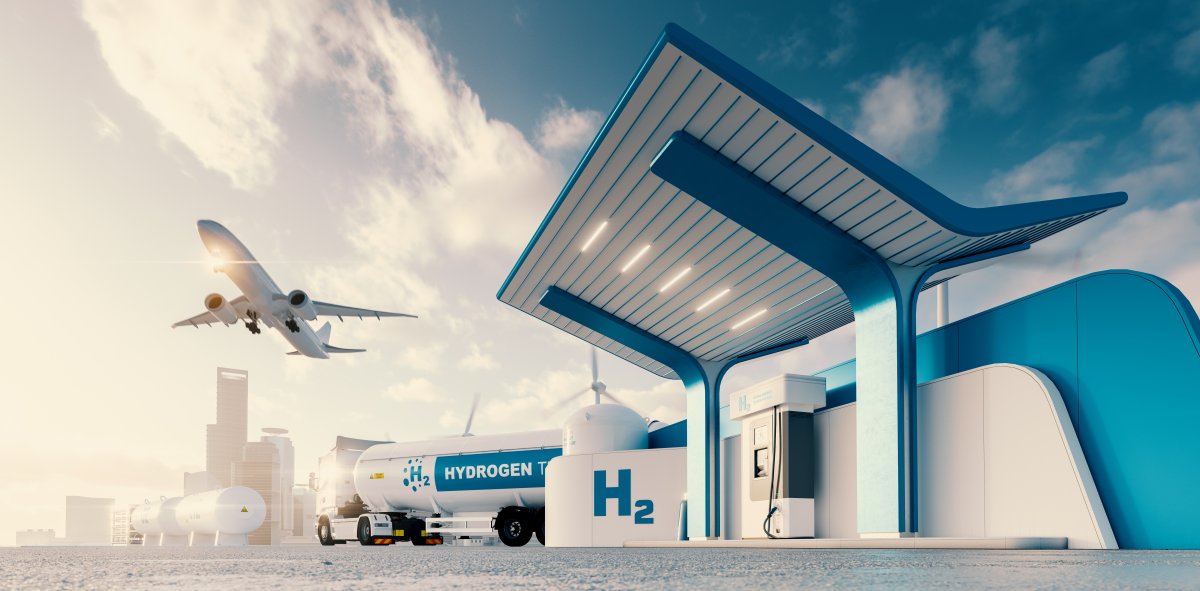Germany relies on “green” hydrogen – so much so that it can never be produced in sufficient quantities domestically. As a result, most of the gas will have to be imported.
But which countries are most suitable as suppliers? After all, the conditions are very different in the world regions – depending on the physical potential, the existing infrastructure, the costs (also for transport) and the political stability of the country concerned.
The Federal Ministry of Economics (BMWK) remains taciturn when asked and only makes a general statement: “The federal government and the BMWK are very active in approaching partner countries in Europe and internationally to promote imports of green hydrogen.” The ministry will not be more specific. A few basic figures regarding the EU are all there is: In 2030, the EU wants to import ten million tons of hydrogen annually. In addition, there should be an in-house generation of the same amount.
Hydrogen from other European countries
The H2Global Foundation is closely linked to the BMWK. The answers there are correspondingly reserved. It is said that there are “no analysis or research results” on the question of the countries of origin, the transport routes and the costs. You will be informed about it in time.
In the meantime, more can be learned from market players – for example from the industry association Zukunft Gas. In particular, other European countries are suitable for hydrogen imports; In addition, “the Mena region should also be looked at more closely,” says an association spokesman, referring to the Middle East and North Africa.
According to the association, transport via pipeline is particularly recommended for imports from Europe and possibly from the Mena region. For supply countries that are further away, transport by ship using derivatives such as ammonia is more suitable. However, Zukunft Gas does not want to comment on possible prices for the energy source either. Pricing is “always dependent on many influencing factors, so that forecasts for more than three years in advance are already subject to considerable uncertainty”.
“Use the existing pipelines”
Meanwhile, the German Hydrogen and Fuel Cell Association (DWV) brings other aspects into play. Firstly, the time: If things have to be done quickly, the European countries are predestined due to the existing infrastructure: “In the first step, we should use the existing pipelines”. Although the DWV also considers West Africa suitable for importing hydrogen via pipeline, it will take 15 to 20 years – so it is not for short-term climate goals. Another aspect that speaks in favor of the pipeline over the ship transport of ammonia is the added value; this must be in Europe. The association therefore rejects ammonia production in Africa.
Hydrogen suppliers: A look at Europe
The status quo differs among European hydrogen suppliers. Southeastern Europe still needs support to set up the appropriate infrastructure, especially Greece, Romania and Bulgaria. Spain is also an attractive country, but Spain is already quite active on its own and therefore does not need any help from Germany.
Nevertheless, there are also projects in Africa. The Hydrogen Europe association in Brussels points out that the EU has already signed a declaration of intent with Namibia and Egypt, as well as with Kazakhstan.
Hydrogen Europe is an association that is strongly influenced by German technology companies. They are desperately looking for green hydrogen – especially in Africa. Association leader Jorgo Chatzimarkakis even calls Namibia “the dream country, one of the most democratic countries in Africa”. The next countries to consider are Morocco and South Africa. Algeria is also an option, but the country is making too slow progress. Mali is fundamentally attractive because there is “white hydrogen”, i.e. hydrogen that occurs naturally as a hydrogen molecule and therefore does not have to be produced with renewable energies. But Mali is politically too insecure.
Transporting hydrogen by pipeline is the cheapest option, says Chatzimarkakis. But alternative means of transport could also be considered, such as tankers. Further options would arise because the hydrogen does not necessarily have to be transported as a pure gas. In addition to ammonia and synthetic methane, a Liquid Organic Hydrogen Carrier (LOHC) can also be used. This is an oily organic substance that chemically binds hydrogen. This means that existing oil pipelines can be used to transport hydrogen without any conversion work.
Future hydrogen prices
The question remains what hydrogen will cost in the future. The DWV estimates that prices over four euros per kilogram are critical for users. Today, a kilogram of hydrogen still costs around ten euros in Germany. Since around 50 kilowatt hours of electricity are required to produce one kilogram of hydrogen in electrolysis, the price of electricity is a decisive factor.
Chatzimarkakis believes that with cheap electricity abroad, cheap hydrogen can also be produced for Germany. Chatzimarkakis estimates that by 2030 hydrogen from Africa will be available in Germany for 1.50 to 2 euros per kilogram. Because prices then continue to fall, the quantities produced will increase exponentially from 2030 onwards.
It remains to be seen whether the BMWK is similarly optimistic – because there are no answers about price expectations either. One only learns that German companies “can buy hydrogen and hydrogen derivatives via an auction system” in the future. From which countries the coveted gas will then come will depend above all on how quickly the countries concerned progress with the expansion of renewable energies and the build-up of electrolysis capacities.

(jl)
